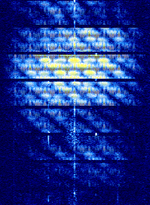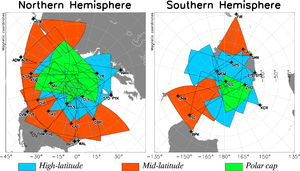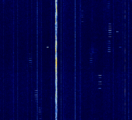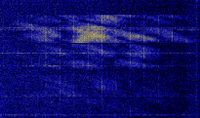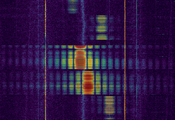SuperDARN (Super Dual Auroral Radar Network)
| Radars | |
|---|---|
| Military: 🇮🇷 🇷🇺 'Ghadir' OTH Radar (Iran/Russia "Rezonans") - 🇷🇺 29B6 'Kontayner' OTH Radar (Russia) - 🇷🇺 Podsolnukh 'Sunflower' Radar (Russia) - 🇨🇳 Chinese 'Foghorn' OTH radar (China) - 🇨🇳 'OTH-SW' OTH Radar (China) 🇦🇺 Jindalee Operational Radar Network (JORN) (Australia) - 🇨🇾 🇬🇧 PLUTO II OTH Radar (Cyprus/UK Base) - 🇺🇸 Relocatable Over-the-Horizon Radar (ROTHR) (US) Civil: 🌎 🌊 CODAR (Worldwide) - 🇺🇸 High Frequency Active Auroral Research Program (HAARP) (Alaska, US) *VHF |
SuperDARN (Super Dual Auroral Radar Network) (sometimes known as The Grasshopper) is an international radar network used for scientific purposes. The network is used to study plasma convection in the upper atmosphere. All worldwide sites are operated by various research organizations and universities.
Characteristics[edit]
The SuperDARN radars operate between 8-22 MHzMegaHertz (MHz) 10^6 Hz and have directional transmissions. It can often be identified by its characteristic "scalloped" shaped signal and its "crunchy" sound when listened to with AMAmplitude Modulation or USBUpper Side Band Modulation (Radio, referring to reception and modulation mode)Universal Serial Bus (Computer, referring to USB Ports and cables).
Locations[edit]
As of April 2020, there are 36 sites worldwide that operate as part of the SuperDARN network. The list of active SuperDARN sites is maintained by the Virginia Polytechnic Institute and State University.
Frequencies[edit]
- 9.91 MHzMegaHertz (MHz) 10^6 Hz
- 10.25 MHzMegaHertz (MHz) 10^6 Hz
- 10.50 MHzMegaHertz (MHz) 10^6 Hz
- 10.56 MHzMegaHertz (MHz) 10^6 Hz
- 10.60 MHzMegaHertz (MHz) 10^6 Hz
- 10.66 MHzMegaHertz (MHz) 10^6 Hz
- 10.70 MHzMegaHertz (MHz) 10^6 Hz
- 10.90 MHzMegaHertz (MHz) 10^6 Hz
- 11.06 MHzMegaHertz (MHz) 10^6 Hz
- 11.08 MHzMegaHertz (MHz) 10^6 Hz
- 12.00 MHzMegaHertz (MHz) 10^6 Hz
- 12.20 MHzMegaHertz (MHz) 10^6 Hz
- 12.57 MHzMegaHertz (MHz) 10^6 Hz
- 12.60 MHzMegaHertz (MHz) 10^6 Hz
- 13.00 MHzMegaHertz (MHz) 10^6 Hz
- 14.57 MHzMegaHertz (MHz) 10^6 Hz
- 14.80 MHzMegaHertz (MHz) 10^6 Hz
Samples[edit]
Sample from Blackstone (BKS) Site (by DLW):
Sample from Wallops (WAL) Site (by DLW):
Video Examples[edit]
- SuperDARN Activity
- Radar, SuperDARN, 10560 kHz, April 10, 2011, 1412 UTC
- SuperDARN "The Grasshopper" 10/12/2018
- SuperDARN Radar, April 6, 2015
- SuperDARN HF Radar 9.910 MHz
